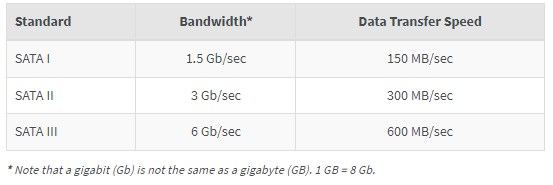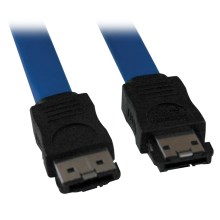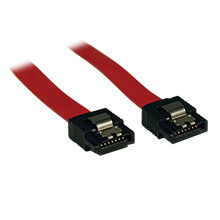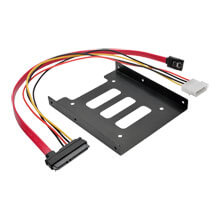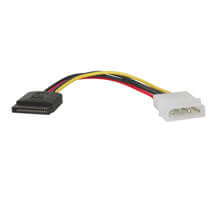SATA Cables Explained
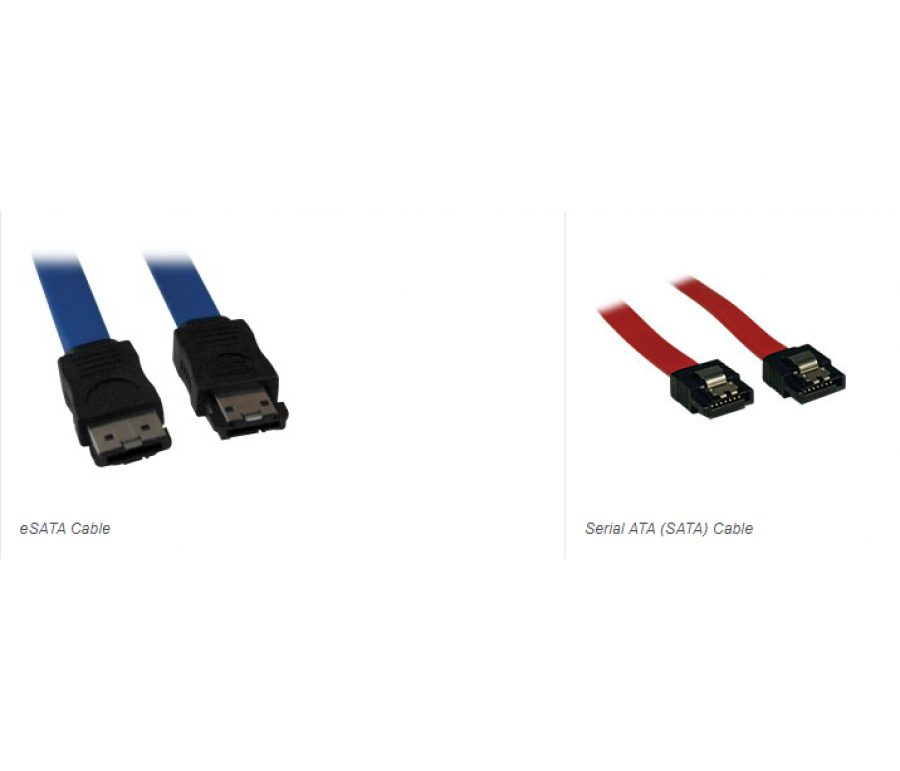
SATA data cables are used to connect storage devices to your computer's motherboard ("mobo") or SATA controller.
What is a SATA Cable?
SATA (also referred to as Serial ATA) stands for Serial Advanced Technology Attachment, an industry-standard bus interface for connecting a computer's host bus adapter to storage devices such as hard disk drives (HDD), optical drives and solid-state drives (SSD).
eSATA Cable |
Serial ATA (SATA) Cable |
SATA cables are typically used inside a computer's case. eSATA cables connect external devices outside of the computer case and support data transfer but not power (the assumption being that external devices have their own power supply). eSATAp (Power over eSATA) is a combination of eSATA and USB. An eSATAp port accepts an eSATA or USB connector and provides both data transfer and power.
SATA Connectors
Standard, wafer-style SATA connectors come in male and female formats and are available in three varieties: data only, power only and data plus power. Wafer-style connectors have pins arranged in a single row, making them wider but capable of mating with small devices like SSDs.
SATA Data Connectors
A SATA data connector has 7 horizontal pins, four pins arranged in two pairs for data and 3 ground pins. One end (the end that connects to a storage device) may be angled to save space.
|
|
A small form factor version of the SATA data connector, known as mini-SATA or mSATA connector is designed for use with smaller, power-constrained devices such as laptops and tablets.
15-Pin SATA Power Connector
|
|
Less common SATA power connectors are the 6-pin, +5 VDC "Slimline" connector first introduced in SATA release 2.6, and the 9-pin, +3.3 VDC and +5 VDC micro connector for 1.8-inch (46 mm) hard disk drives.
SATA 22-Pin Data/Power to 7-Pin SATA and 4-Pin Molex |
SATA 15-pin power connector to 4-pin Molex LP4 connector |
SATA Cables
A twinaxial ("twinax") SATA data cable is typically flat with its 4 copper conductors arranged side-by-side in pairs with a gap in between. SATA uses differential signaling to reduce electromagnetic interference (EMI) or crosstalk (interference from the other conductors in the cable). Differential signaling also requires a lower voltage, which reduces power consumption.
SATA cables can be up to a meter (3.3 feet) in length, but attenuation (signal loss) can be minimized by using the shortest possible cable for internal and external connections. eSATA cables can be up to 2 meters (6.6 feet) in length and support multiple devices on a single port/cable.
Data Transfer Speeds
Since its introduction in 2003, the SATA interface has undergone three major revisions. The primary difference between versions is data transfer speed.
SATA III cables (also referred to as SATA 3 cables) are backward compatible with earlier standards so SATA II rated devices will function but at a reduced speed. For